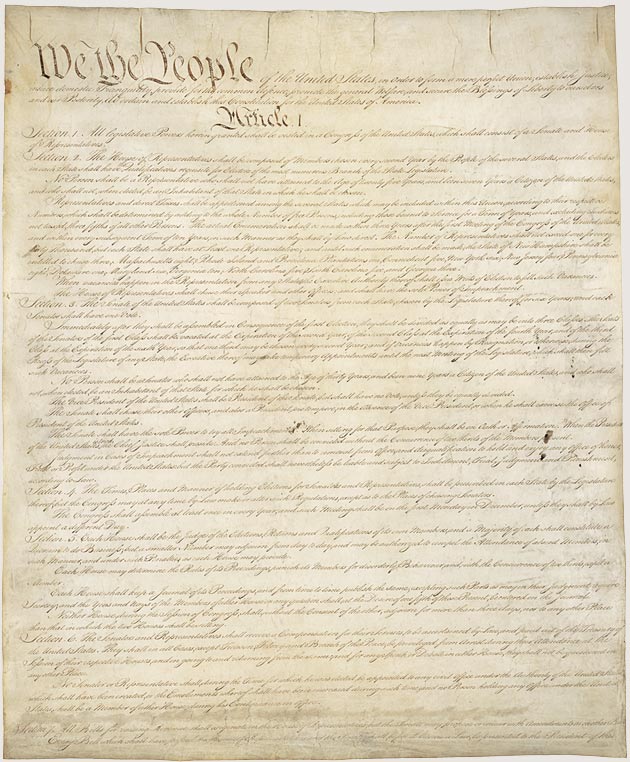We’ve had a little time to reflect as a school on the incidents that surrounded the Anti-Defamation League meetings earlier in the year–namely the hateful content made by some of our peers on social media and the desecration of a historic Jewish cemetery in the area. With the junior’s recent ACT and the all-consuming AP tests the incidents have slowly, yet surely, drifted from our attention and been gently placed on the backburner of memory. This time has given us space to digest the response of the school and develop our own opinions about what should and shouldn’t be done in response. The response I heard from many people both in and out of the ADL discussion consisted of outrage that not enough was done to punish the students responsible for the offensive speech–that an example should have been made. However, there is a critical reason for the tepid response on the part of the administration–it isn’t really the school’s place to respond.
Now don’t get me wrong, the school has the ability to regulate speech on school grounds – specifically speech that is conducive to a productive school environment. This was established by the Supreme Court in their ruling over Bethel School District No. 403 v. Fraser, which arose as a case when a student delivered a speech during a assembly that was rife with obscene and otherwise offensive language – the student was suspended and then contested that suspension all the way to the supreme court. The court ruled against the student, Chief Justice Warren Berger writing, “the undoubted freedom to advocate unpopular and controversial views in schools and classrooms must be balanced against the society’s countervailing interest in teaching students the boundaries of socially appropriate behavior.” But importantly, this occurred on school grounds during a school event–thus it was well within the bounds of what the school to regulate.
The school can’t regulate everything expressed on school grounds. This was established in Tinker v. Des Moines Independent Community School District when a number of students were suspended for wearing armbands protesting the Vietnam war and, after a lengthy legal battle, it was determined that schools can only restrict speech that “materially disrupts classwork or involves substantial disorder or invasion of the rights of others is, of course, not immunized by the constitutional guarantee of freedom of speech.” Justice Abe Fortas also went on to say, “In the absence of specific showing of constitutionally valid reasons to regulate their speech, students are entitled to freedom of expression of their views.”
What if the incident occurred off campus? What if it involved social media? Does the school have the power to regulate offensive speech on Twitter, Instagram, or Facebook? This remains untested by the highest court, but it has been battled out in the lower courts. In 2005 the third circuit court ruled in favor of a student who created a MySpace page for the purpose of mocking his principle and was then suspended. In 2007 the U.S court of appeals for the second circuit ruled that critical comments made by a student–who was then removed from student government–were justifiably punished since she asked for viewers to complain directly. In 2011 another suspension was overturned by the third circuit over another parody MySpace page – free speech advocates arguing that the punishment was a violation of the student’s first amendment rights.
The conclusion I am left with from the legal precedent on each side of the new century is that the school, while it has a legal argument, doesn’t have much of a leg to stand on. They can argue that they have an obligation to provide moral instruction, which they provided by inviting the Anti-Defamation League to facilitate a discussion. They can also argue that the offensive actions of Clayton students constituted a meaningful and material disturbance, which warranted a punishment. But, that is a threshold that the school is compelled to prove.
What this all comes back to is why the students at our school, in our community, were not severely punished. The school didn’t want to fight this battle. A lawsuit is embarrassing to both the school, and the students, and the parents–all the sides have banked on this. If the punishment was too harsh it would be contested, it would have made the few–somewhat tame–articles from local papers seem inconsequential and the case would be costly both in time and money. Ultimately, the last thing that students who were punished and the school itself desired was for these “incidents” to become a chapter in a judicial history textbook.
What’s more, it’s not likely that the school would emerge the victor of a sustained appeals process, hence why they moved forward with cautious punishments. This is indicated by nearly all of the relevant legal precedent – efforts by the school to punish these students was and is unconstitutional. The actions occurred outside of school premises and outside of school hours, no school resources were used. What gives the school the authority to act? I will remind the school that offensive speech – hate speech – is still protected by the constitution’s first amendment. It would be wise not to forget that.

